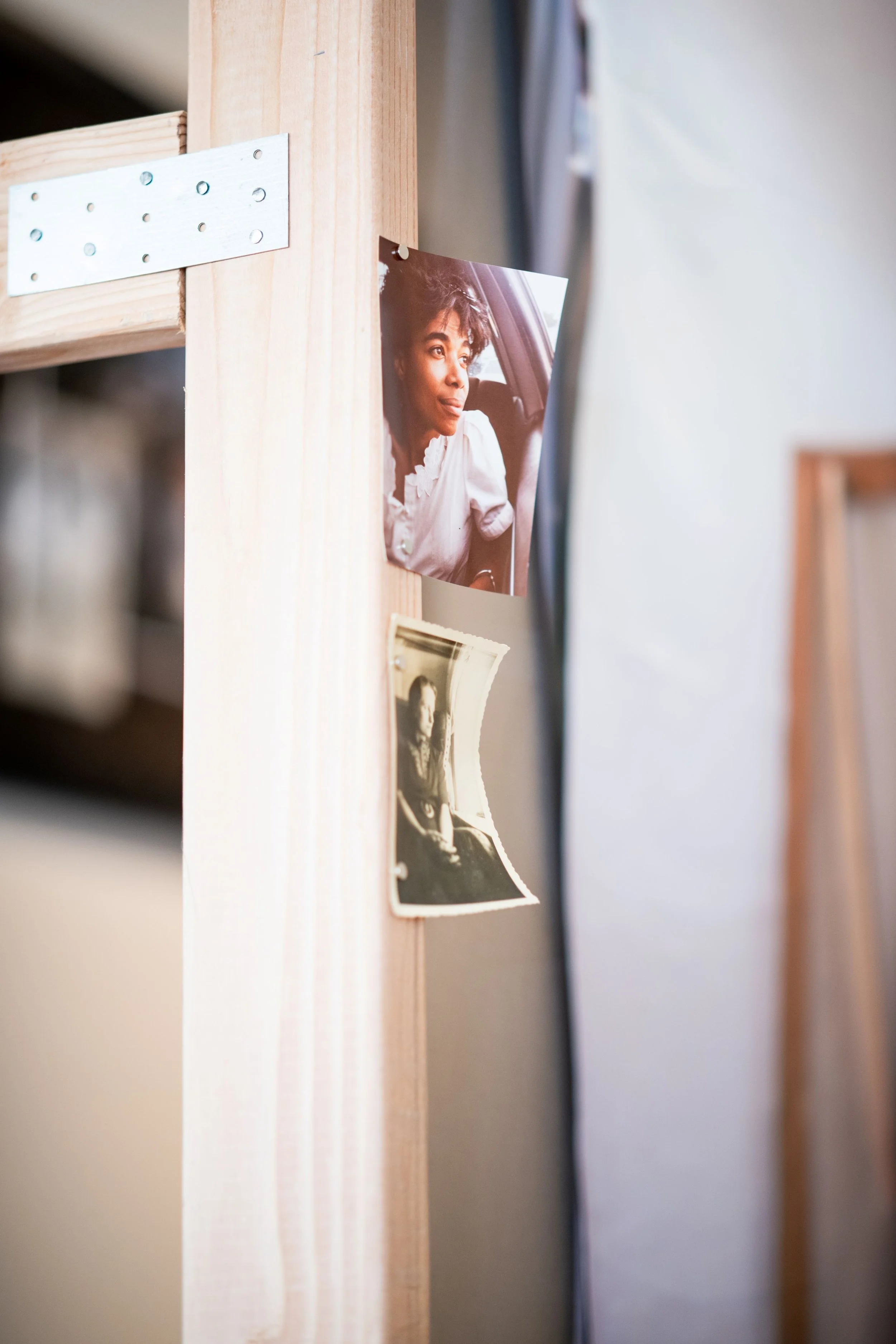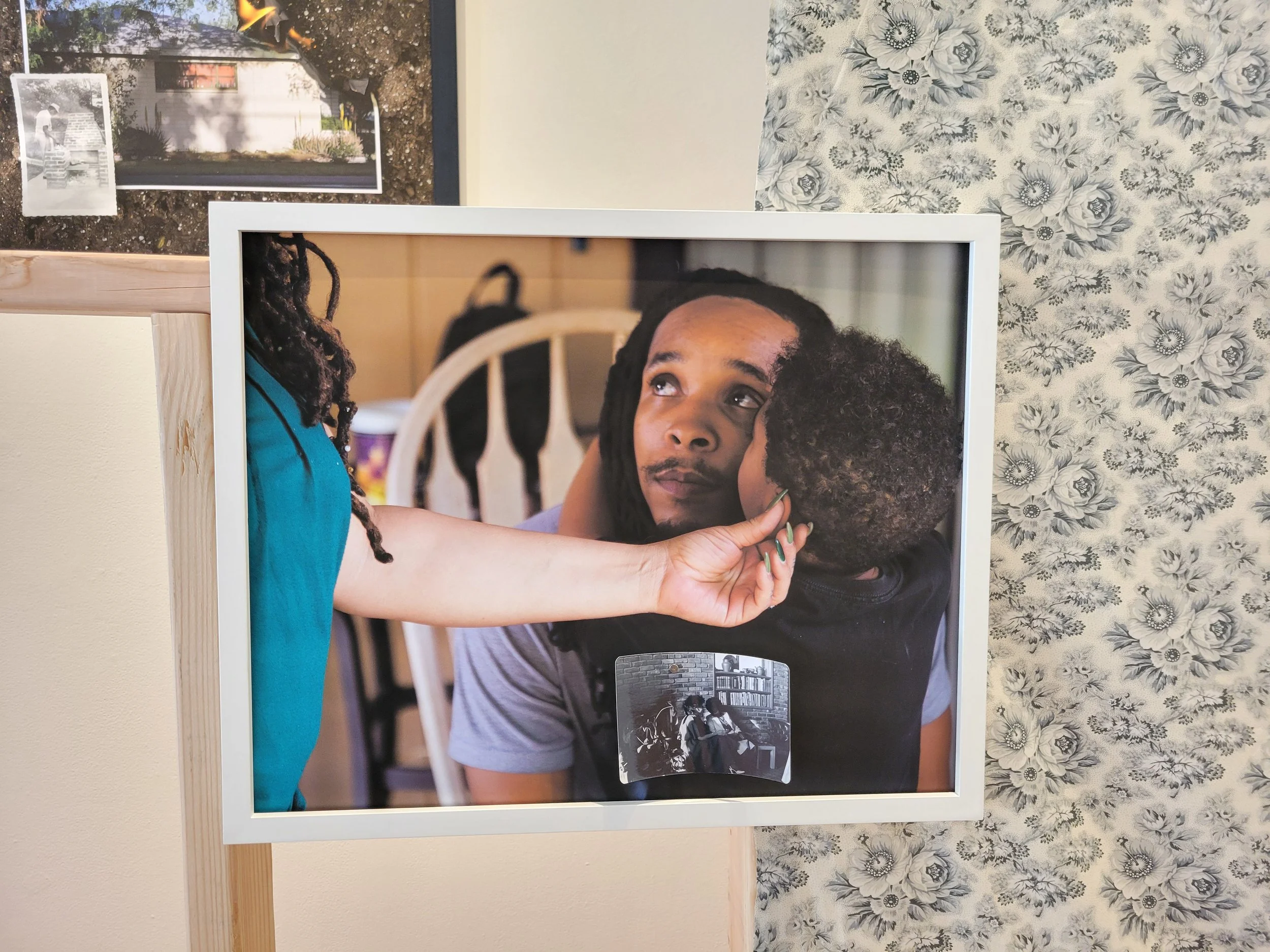Memories of Home, Real, Constructed, and Imagined
First Impressions on Finding Home, an Exhibition by Kat Davis and Megan Driving Hawk
Preface
This is the first in a series that captures Finding Home, a two-person exhibition from artists Kat Davis and Megan Driving Hawk. A series? Don’t you already write way too much? Yes, and that’s why I have to break it up into chunks. Why so much? Is it just because you’re married to Kat and want to over-indulge? I have lived with this work as it came together in the weeks and months preceding this show. Really, I’ve lived with this work for years as it’s been developed and shown elsewhere, and I would call this exhibition a culmination of it. This is to say, I know too much about this work, considering its themes for years. You could say I have been writing these pieces for just as long. Naturally, it’ll take more space.
That said, I’ve written about Kat’s work and method previously, and so I want to take a different approach here and now, especially with Megan’s collaboration.
Finding Home as a theme is immediately complicated by the wall frame structure you are confronted with when you enter the gallery. You can look around and see photographs of moments captured, vintage photos of more distant memories–a general sense of nostalgia. Taken independently, you would think of finding home as an excavation, a rediscovery. But the wall frame invokes construction. Making home vs. finding it. (But aren’t memories constructions as well? More on this later.)
You think of the suburban sprawl, tract housing and strip malls tessellating the Arizona Valley with its frontier of wooden studs. You think of the developments in Glendale that pushed your family to a new build in Goodyear where there were once cotton fields, and then to Buckeye, nestled in the White Tank Mountains. You begin to distinguish between making houses and finding homes in foreign trappings, nesting in new trees with 2x4 branches.
Photo credit: Josh Loeser
Draped over the wall frame and wafting in the cool A/C blowing into the room is a fabric depicting Davis’s mother, slightly larger than life, resting against a door frame with her hand on her chest. Catch Your Breath, it’s titled. And as you do so, you follow the mother’s gaze to the side and onto two black-and-white vintage photos magnetized to the leftmost stud in the wall frame. Two women look back through the decades between the subjects.
Positioning yourself slightly around that corner and you find another fabric, smaller and lower. Here is a house, proudly displaying an American flag in its window, completely concealing the home within. The top half of the window catches the light of the setting sun, and it gives the appearance of the American stars burning in flames. Flashpoint, it’s titled. You consider this with a framed image behind the wall frame and on the gallery wall proper: It is a rephotograph of two layered photos–one Davis took of an old brick house, the other a vintage photo of a man grilling over a brick fire pit. The first photograph is on fire. Brick by Brick, it’s titled.
The wall frame begins to invoke something else, something contrary to the idea of building home. You think of the houses you’ve seen across the Phoenix area in various states of deterioration and demolition. Skeletons of houses, homes failed or outgrown or destroyed. Collapsed American dreams.
On the other end of the wall frame, fabric is tacked over an area with a pattern reminiscent of vintage wallpaper. Half over the fabric and half over the void between studs, a framed photograph captures a common domestic scene rife with intimacy: A mother’s arm enters into the frame, disrupting a moment between a father and his young son sitting on his lap. The mother’s gesture is kindly, playing with the boy’s ear as he is caught in a laugh. The father looks up and out of frame at the mother, his face pleading… to linger a little longer? Trivialities–chores, errands–are just as catastrophic to the home that lives in the seconds spent together. Ready, Hun? it’s titled.
Ready Hun?, 2025
As you peer at the work, you nearly kick over a picture frame sitting just off the floor on a spare chunk of wood. It’s a gilded frame, and you think of it and the black paper within as a dedication plaque. You read the poem that Megan Driving Hawk composed within:
How many people would frown upon my holding you
but I don’t care
This is the way we grew up together
so it only makes sense for me to heal together this way too
The little moments that we still get
to steal away from everyone else
with each other are my favorite parts of the day
I am at the intersection of memory and the future
When awake is actually dreaming and dreaming is real
We aren’t supposed to understand the memory of the future
And then…
At the intersection of memory and the future, you find a present under construction, a dream becoming concrete. But in what ways does the present moment construct the past? And how does a future not yet here come to dictate how we see ourselves now? How often are we nostalgic for a past that didn’t exist, and is it possible to be nostalgic for the future?
In the next installment, we will look more closely at the artists’ methods in investigating these questions through found photography, double exposure, and the figurative frames we are left to build our own stories and realities.






